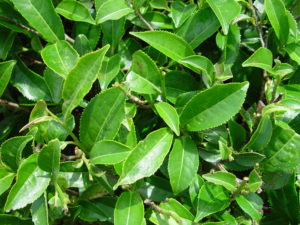 All teas come from the same plant, Camellia Sinensis. This shrub is native to east, south, and southeast Asia, but is cultivated all over the world. The most common categories of teas are differentiated by the way they are dried. The manufacture of green tea is simple, being just picked and heat-dried. However, black tea and oolong tea are oxidized before being dried. Black tea is oxidized slightly longer than oolong, creating two distinct flavors and aromas. White tea is made by plucking only the buds and youngest leaves and drying them. This light touch preserves the integrity of the leaf, and serves up healthful antioxidants.
All teas come from the same plant, Camellia Sinensis. This shrub is native to east, south, and southeast Asia, but is cultivated all over the world. The most common categories of teas are differentiated by the way they are dried. The manufacture of green tea is simple, being just picked and heat-dried. However, black tea and oolong tea are oxidized before being dried. Black tea is oxidized slightly longer than oolong, creating two distinct flavors and aromas. White tea is made by plucking only the buds and youngest leaves and drying them. This light touch preserves the integrity of the leaf, and serves up healthful antioxidants.
Teas also have subcategories, with even more varieties of unflavored teas. Pan-fired green teas for example are made by heating the leaves in an iron pan over a flame. This action reduces the “grassy” flavor of the leaves and creates a distinctly unique aroma and taste. Some teas get their flavor from the area they are grown. Assam (India) teas have a different flavor and aroma than Ceylon (Sri Lanka) teas because of the difference in soil, humidity and altitude.
Some teas may even be grown and processed in the same place in the same way but have different tastes due to the time of year they were picked. Darjeeling (India) First Flush (the first harvest of each growing season) and Darjeeling Second Flush have very distinct qualities. First Flush is considered more complex, delicate and more highly prized. Second and Third Flush (Autumn) have more “body.”
With so many slight differences in the tea growing and drying process it is easy to see why so many types of teas exist.

















